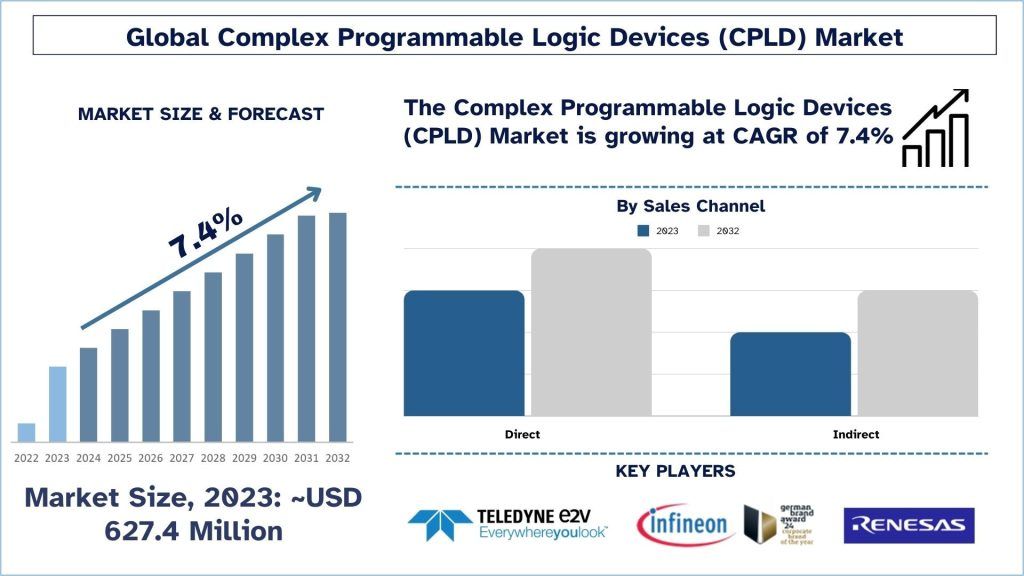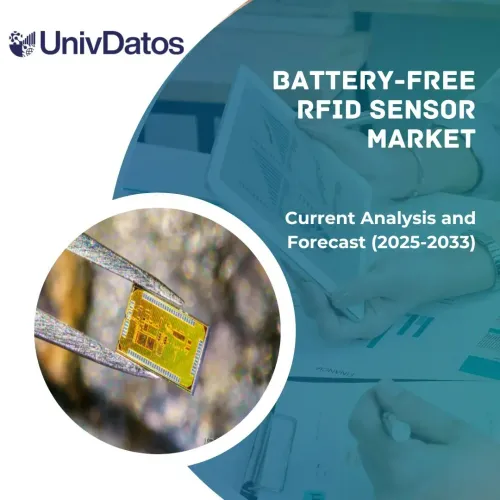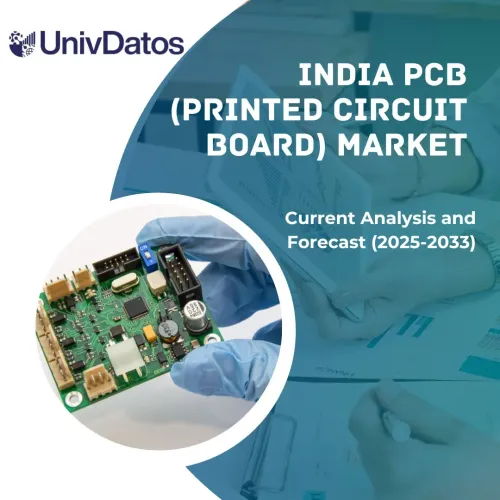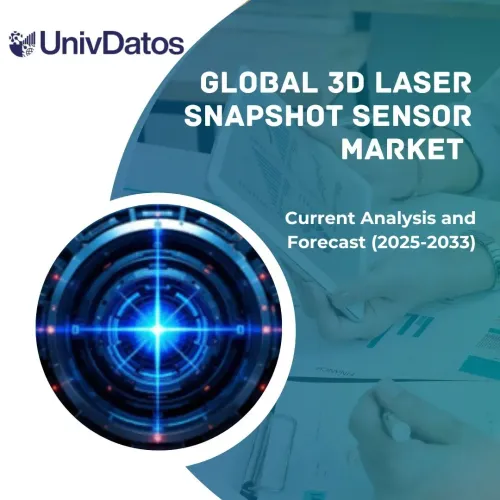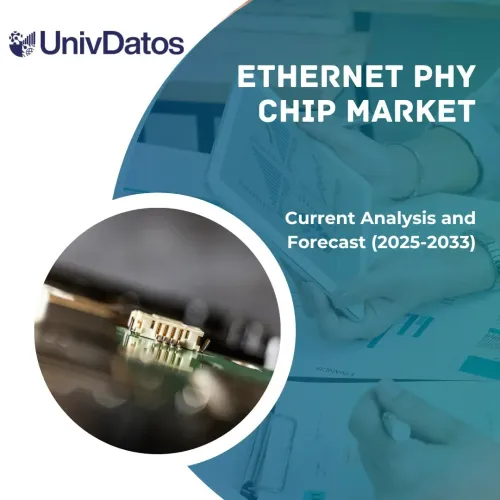複合プログラマブルロジックデバイス(CPLD)市場:現状分析と予測(2024-2032)
タイプ(EEPROMベース、フラッシュベースなど)別の区分、販売チャネル(直接および間接)、用途(家電、電気通信、自動車、医療機器、産業用など)、および地域/国別の内訳
世界の複合プログラマブルロジックデバイス(CPLD)市場規模と予測
世界の複合プログラマブルロジックデバイス(CPLD)市場は2023年に6億2740万米ドルと評価され、予測期間(2024-2032年)中に約7.4%の力強いCAGRで成長すると予想されています。これは、CPLDがウェアラブル、スマートホーム、コネクテッドデバイスなど、低消費電力、高速構成、小型サイズを必要とするIoTアプリケーションに最適であるためです。
複合プログラマブルロジックデバイス(CPLD)市場分析
複合プログラマブルロジックデバイス(CPLD)市場は、いくつかの分野における費用対効果が高く、プログラマブルで低消費電力、汎用性の高いデジタルソリューションに対する需要の高まりにより、着実に成長しています。CPLDの主要な適用分野には、電気通信、自動車、家電、産業オートメーションなどがあり、特定のアプリケーションに合わせて再プログラムできる、非常に効率的なハードウェアの要件を満たしています。IoTや5Gなどの新興技術とともに、半導体設計における高度な技術開発がCPLDの使用を強化しています。ただし、FPGAなどの他のプログラマブルデバイスはCPLDと競合する可能性があり、市場に影響を与える可能性がありますが、CPLDのシンプルさと比較的低いコストは、常に需要を確保する強みです。
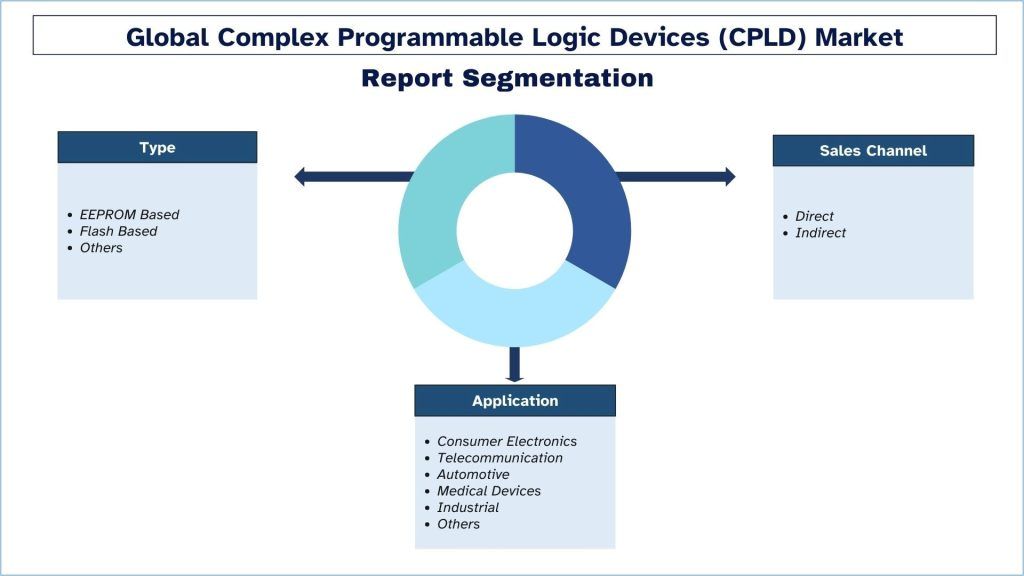
世界の複合プログラマブルロジックデバイス(CPLD)市場動向
このセクションでは、当社の調査専門家チームが特定した、世界の複合プログラマブルロジックデバイス(CPLD)市場のさまざまなセグメントに影響を与えている主要な市場動向について説明します。
家電セグメントが業界を変革
家電はCPLD市場の主要セグメントの1つであり、スマートフォン、タブレット、ウェアラブルデバイス、ホームオートメーションシステムなどの複雑で機能豊富なデバイスに対する需要の増加により、複雑なプログラマブルロジックソリューションが必要とされています。CPLDは汎用性が高く、低消費電力であるため、設計変更が頻繁に行われ、迅速な開発が必要とされる家電分野でのアプリケーションに適しています。CPLDはまた、メーカーが短期間で自社製品にリアルタイム処理や接続性などの新しい機能を追加したい場合にも重要な役割を果たします。このような新しい、改良された電子機器の必要性がCPLDの使用を促進し、この市場の成長を牽引しています。
アジア太平洋地域も予測期間中に着実に成長
アジア太平洋地域の複合プログラマブルロジックデバイス(CPLD)市場も、工業化、電子機器製造の拡大、電気通信、自動車、家電など、さまざまな業界における新技術の統合の増加などの要因により、着実に成長しています。これは、中国、日本、韓国などの主要国が半導体部品の生産と開発をリードしているため、CPLDの開発と製造にとって戦略的な地域となっているためです。さらに、アジア太平洋地域におけるIoTデバイス、5Gネットワーク、スマートシティプロジェクトの需要の増加は、適応性とカスタマイズを提供するプログラマブルロジックソリューションであるCPLDの要件を増加させています。現在、この地域の企業は、研究開発への投資を増やし、製品に高度な半導体技術を統合して、高まるニーズに対応しており、それによりアジア太平洋市場に明るい未来を与えています。
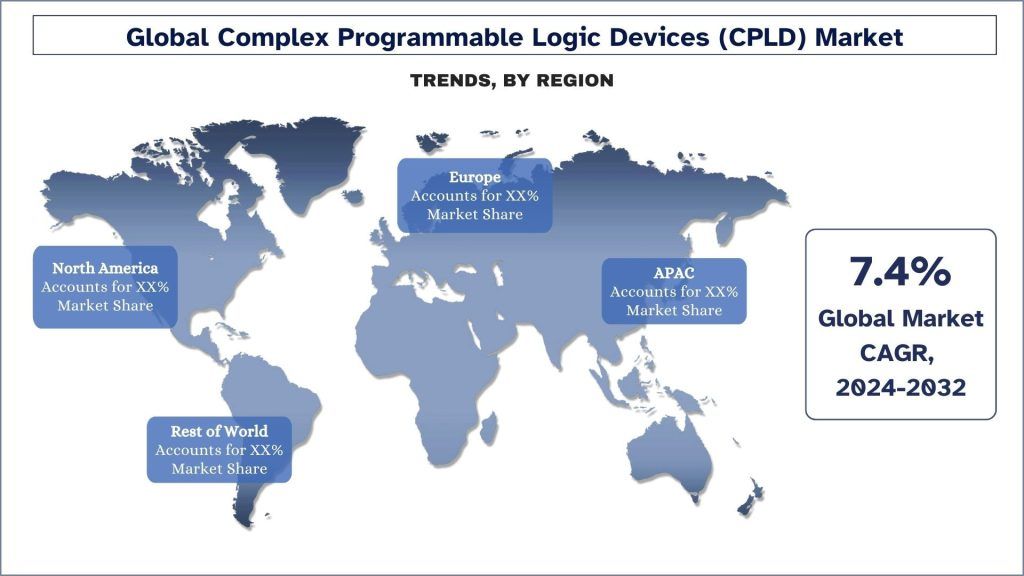
世界の複合プログラマブルロジックデバイス(CPLD)業界概要
世界の複合プログラマブルロジックデバイス(CPLD)市場は競争が激しく、いくつかのグローバルおよび国際的な市場プレーヤーが存在します。主要プレーヤーは、パートナーシップ、合意、コラボレーション、新製品の発売、地理的拡大、合併および買収など、市場でのプレゼンスを強化するためのさまざまな成長戦略を採用しています。市場の主要プレーヤーには、インテル株式会社、Microchip Technology Inc.、Advanced Micro Devices, Inc.、Lattice Semiconductor、Texas Instruments Incorporated、Infineon Technologies AG、DediProg、Renesas Electronics Corporation、Teledyne Technologies Incorporated、およびRochester Electronicsが含まれます。
世界の複合プログラマブルロジックデバイス(CPLD)市場レポートの対象範囲
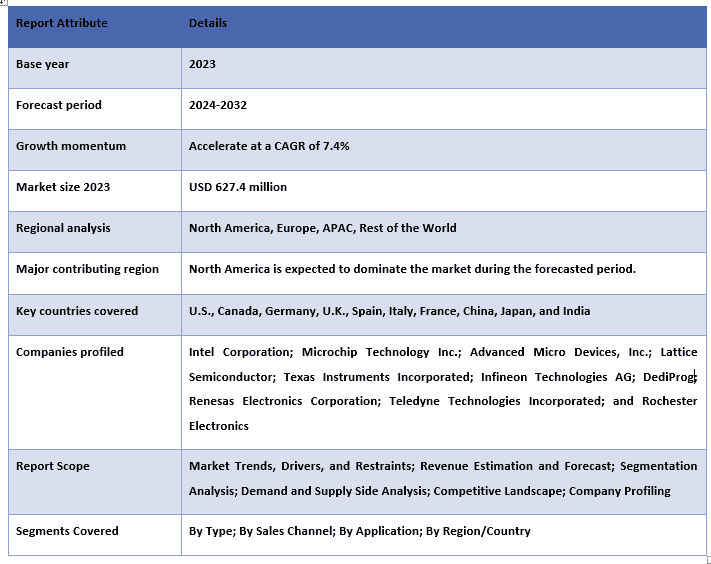
このレポートを購入する理由:
- この調査には、認証された主要な業界専門家によって確認された市場規模と予測分析が含まれています。
- このレポートでは、業界全体のパフォーマンスを簡単にレビューします。
- このレポートでは、主要なビジネス財務、タイプポートフォリオ、拡張戦略、および最近の開発に焦点を当て、主要な業界ピアの詳細な分析をカバーしています。
- 業界で優勢な推進要因、抑制要因、主要なトレンド、および機会の詳細な調査。
- この調査は、さまざまなセグメントにわたる市場を包括的にカバーしています。
- 業界の詳細な地域レベル分析。
カスタマイズオプション:
世界の複合プログラマブルロジックデバイス(CPLD)市場は、要件または他の市場セグメントに従ってさらにカスタマイズできます。これに加えて、UMIは、お客様が独自のビジネスニーズを持っている可能性があることを理解しているため、お客様の要件に完全に適合するレポートを入手するために、お気軽にお問い合わせください。
目次
世界の複合プログラマブルロジックデバイス(CPLD)市場分析(2024-2032)の調査方法
過去の市場の分析、現在の市場の推定、および世界の複合プログラマブルロジックデバイス(CPLD)市場の将来の市場の予測は、主要地域における世界の複合プログラマブルロジックデバイス(CPLD)の採用を作成および分析するために行われた3つの主要なステップでした。過去の市場数値を収集し、現在の市場規模を推定するために、広範な二次調査が実施されました。次に、これらの洞察を確認するために、多数の調査結果と仮定が検討されました。さらに、世界の複合プログラマブルロジックデバイス(CPLD)市場のバリューチェーン全体にわたる業界専門家との広範な一次インタビューが実施されました。一次インタビューによる市場数値の仮定と検証のために、トップダウン/ボトムアップアプローチを採用して、完全な市場規模を予測しました。その後、市場の細分化とデータの三角測量方法を採用して、業界のセグメントとサブセグメントの市場規模を推定および分析しました。詳細な方法は以下のとおりです:
過去の市場規模の分析
ステップ1:二次情報源の詳細な調査:
年次報告書と財務諸表、業績発表、プレスリリースなどの企業内部情報源、ジャーナル、ニュースと記事、政府出版物、競合他社の出版物、セクターレポート、サードパーティデータベース、およびその他の信頼できる出版物を含む外部情報源を通じて、世界の複合プログラマブルロジックデバイス(CPLD)市場の過去の市場規模を取得するために、詳細な二次調査が実施されました。
ステップ2:市場セグメンテーション:
世界の複合プログラマブルロジックデバイス(CPLD)市場の過去の市場規模を取得した後、主要地域のさまざまなセグメントとサブセグメントの過去の市場インサイトとシェアを収集するために、詳細な二次分析を実施しました。主要なセグメントには、タイプ、販売チャネル、アプリケーション、および地域が含まれます。さらに、その地域でのテストモデルの全体的な採用を評価するために、国レベルの分析が実施されました。
ステップ3:要因分析:
さまざまなセグメントとサブセグメントの過去の市場規模を取得した後、世界の複合プログラマブルロジックデバイス(CPLD)市場の現在の市場規模を推定するために、詳細な要因分析を実施しました。さらに、タイプ、販売チャネル、アプリケーション、および世界の複合プログラマブルロジックデバイス(CPLD)市場地域などの従属変数と独立変数を使用して、要因分析を実施しました。世界の複合プログラマブルロジックデバイス(CPLD)市場における主要なパートナーシップ、合併と買収、事業拡大、および製品発売を考慮して、需要と供給側のシナリオの詳細な分析が実施されました。
現在の市場規模の推定と予測
現在の市場規模のサイジング:上記の3つのステップからの実用的な洞察に基づいて、現在の市場規模、世界の複合プログラマブルロジックデバイス(CPLD)市場の主要プレーヤー、およびセグメントの市場シェアに到達しました。必要なすべてのパーセンテージシェア分割と市場内訳は、上記に記載の二次的なアプローチを使用して決定され、一次インタビューを通じて検証されました。
推定と予測:市場の推定と予測については、推進要因とトレンド、抑制要因、および利害関係者が利用できる機会を含む、いくつかの要因に重みが割り当てられました。これらの要因を分析した後、関連する予測手法、つまりトップダウン/ボトムアップアプローチを適用して、世界中の主要市場におけるさまざまなセグメントとサブセグメントの市場予測2032に到達しました。市場規模を推定するために採用された調査方法は、以下を含みます:
国内の主要市場全体での収益(USD)の観点からの業界の市場規模と、世界の複合プログラマブルロジックデバイス(CPLD)市場の採用率
市場セグメントとサブセグメントのすべてのパーセンテージシェア、分割、および内訳
提供されるタイプの観点から、世界の複合プログラマブルロジックデバイス(CPLD)市場の主要プレーヤー。また、この急速に成長している市場で競合するために、これらのプレーヤーが採用した成長戦略。
市場規模とシェアの検証
一次調査:主要地域全体の主要オピニオンリーダー(KOL)である主要幹部(CXO/VP、販売責任者、マーケティング責任者、運用責任者、地域責任者、カントリーヘッドなど)との詳細なインタビューが実施されました。一次調査の結果は要約され、統計分析が実行されて、述べられた仮説が証明されました。一次調査からのインプットは二次的な調査結果と組み合わされ、それにより情報が実用的な洞察に変わりました。
さまざまな地域における一次参加者の内訳
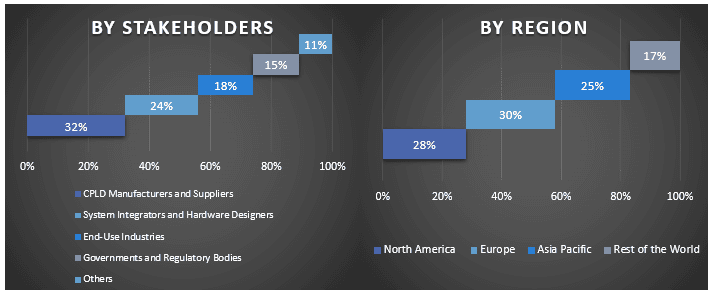
市場エンジニアリング
データの三角測量技術を採用して、全体的な市場推定を完了し、世界の複合プログラマブルロジックデバイス(CPLD)市場の各セグメントとサブセグメントの正確な統計数値に到達しました。データは、世界の複合プログラマブルロジックデバイス(CPLD)市場のタイプ、販売チャネル、アプリケーション、および地域におけるさまざまなパラメーターとトレンドを研究した後、いくつかのセグメントとサブセグメントに分割されました。
世界の複合プログラマブルロジックデバイス(CPLD)市場調査の主な目的
世界の複合プログラマブルロジックデバイス(CPLD)市場の現在のおよび将来の市場動向がこの調査で特定されました。投資家は、この調査で実行された定性的および定量的な分析に基づいて、投資に対する裁量権の根拠となる戦略的な洞察を得ることができます。現在のおよび将来の市場動向は、地域レベルでの市場全体の魅力を決定し、産業参加者が未開拓の市場を利用して、ファーストムーバーの優位性を享受するためのプラットフォームを提供しました。調査のその他の定量的目標には以下が含まれます:
- 世界の複合プログラマブルロジックデバイス(CPLD)市場の現在の市場規模と予測市場規模を、金額(米ドル)で分析します。また、さまざまなセグメントとサブセグメントの現在の市場規模と予測市場規模を分析します。
- 調査のセグメントには、タイプ、販売チャネル、アプリケーション、および地域の分野が含まれます。
- 業界の規制枠組みを定義し、分析します。
- さまざまな仲介業者の存在に関連するバリューチェーンを分析し、業界の顧客と競合他社の行動を分析します。
- 主要地域における世界の複合プログラマブルロジックデバイス(CPLD)市場の現在の市場規模と予測市場規模を分析します。
- レポートで調査された地域の主要国には、アジア太平洋、ヨーロッパ、北米、およびその他の地域が含まれます。
- 世界の複合プログラマブルロジックデバイス(CPLD)市場の企業プロファイルと、プレーヤーが急成長市場を維持するために採用する成長戦略。
- 業界の深い地域レベル分析
よくある質問 よくある質問
Q1:世界の複合プログラマブルロジックデバイス(CPLD)市場の現在の市場規模と成長可能性は?
Q2: グローバル複合型プログラマブルロジックデバイス(CPLD)市場の成長を促進する要因は何ですか?
Q3: タイプカテゴリ別のグローバル複合型プログラマブルロジックデバイス(CPLD)市場で、最大のシェアを持つセグメントはどれですか?
Q4: グローバル複合型プログラマブルロジックデバイス(CPLD)市場における新興技術とトレンドは何ですか?
Q5: どの地域がグローバル複合型プログラマブルロジックデバイス(CPLD)市場を支配するでしょうか?
関連 レポート
この商品を購入したお客様はこれも購入しました

